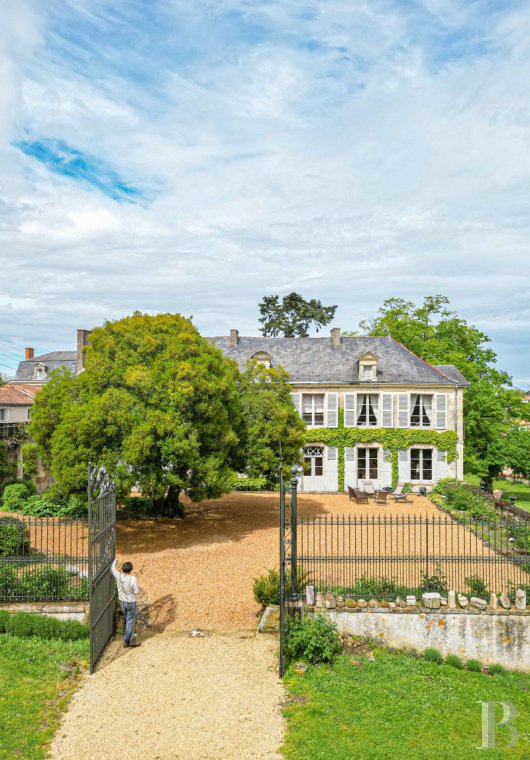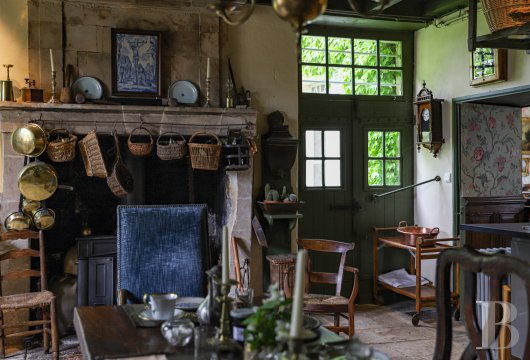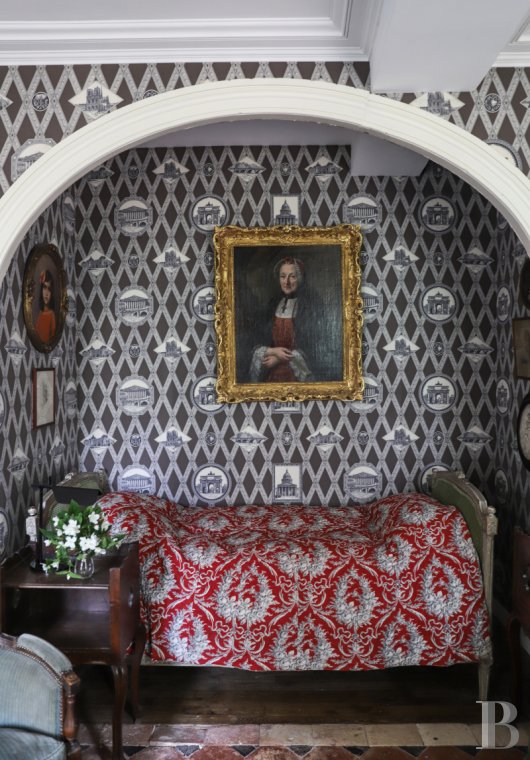Add to favorites
Log in to your personal space

The limestone porch in the wall alongside the village lane sets the tone for the property. The house was likely built by a 19th century nobleman according to the customs of the time, with master's residence, outbuildings and terraced parklands. Taken over by the current owners a few years ago, it has rediscovered its vocation as a family home, with its multitude of furniture, objects and portraits of ancestors which delightfully enliven each room. The fabrics on the walls, in a wide variety of patterns and colours, are a reminder of the days when the daily running of the house was left to others, allowing people to devote themselves to the company of friends and family. Now it's up to visiting guests to relive these type of moments, with the precious feeling that they are part of the household.
With retirement approaching, we started looking for a house between Nevers and Moulins, where we have family. But we also had family links, albeit older, in Poitou and Anjou. We came across this house on the Internet by chance, which more or less matched the specifications we had set ourselves: big but not too big, in its original condition without having suffered the ravages of untimely restorations or renovations, with character but without being pretentious, a location steeped in history which we could bring back to life for a reasonable budget. Disregarding our desire to live in Bourbonnais, we took advantage of a short diversion on the road to Oléron to visit the house, which we immediately fell in love with. To the estate agent’s surprise, who was showing the house for the first time, we made an offer straight away, which was accepted. It was the start of an adventure that continues to this day.

The house was built on the remains of the house of the abbess of Saint-Jean-de-Bonneval abbey in the early 19th century in a classical style that is more Angevin than truly Poitevin. The long south-facing facade has several windows that provide plenty of natural light, while the east-facing facade, with its triangular pediment featuring a bull's eye and a projecting balcony, has a touch of Italy about it. An imposing porch dating back to the mid-18th century which overlooks the village street, a vast communal area containing a bread oven, wine press and stables, a small house and two underground passageways are the only remains of the large buildings that once made up the abbey, whose stones were used for many years to fire the nearby lime kilns. Tall, ancient trees protect the house. A rare aquilaria filaria tree shades the terrace, a majestic sophora japonica catches the setting sun rays, and noble chestnut and lime trees landscape the park.

The Clos de Bonneval occupies the thousand-year-old site of the Benedictine Abbey of Saint-Jean-de-Bonneval, which was founded in the early 10th century by King Lothaire, seized by the revolutionaries at the end of the 18th century and completely destroyed. The house was built in the early 19th century by the Gallot family, who kept it for almost 200 years, until we acquired it in 2019. This makes us the third link in a chain that goes back over more than a thousand years! The property was beginning to suffer the ravages of time and we set out to give it subtle, yet necessary home comforts. Our ambition was to give it back the feeling of being a family home, full of family memories, which we could live in simply and peacefully. A goal we continue to work towards.
The house is set in the heart of the village that grew up around the abbey, five minutes from the centre of the small town of Thouars. It is surrounded by two hectares of parkland, so the house is located in the heart of nature without being isolated. It has a wonderful light thanks to its south-facing location and its many large windows. All of the rooms are decorated with family heirlooms and embellished with paintings or family mementos. A continental breakfast is served in the large kitchen or weather permitting, on the terrace in front of the house.

In Thouars, the church of Saint Médard, the abbey of Saint Laon, the charming little Henri Barré museum and the Friday morning market, one of the most beautiful in France, where food sellers rub shoulders with local producers. The Château d'Oiron, with its sumptuous 16th and 17th century decor that once belonged to Madame de Montespan and now a museum of contemporary art. The neighbouring Renaissance collegiate church of Saint-Maurice d'Oiron. Visit Saint Jouin de Marnes and Aivault to discover the Poitou Romanesque region. Saumur, an important place for the French cavalry. The nearby Loire-Anjou-Touraine Regional Nature Park is home to a wealth of cultural, historical and natural heritage. For something a little simpler, take a stroll along the Thouet, paddle a canoe downstream, or read a good book on the garden deckchairs.
The entire property can be used. There are plenty of accommodation options nearby, both hotels and bed and breakfasts.
ref 586669

 A link to enter a new password has been sent to you by email.
A link to enter a new password has been sent to you by email.